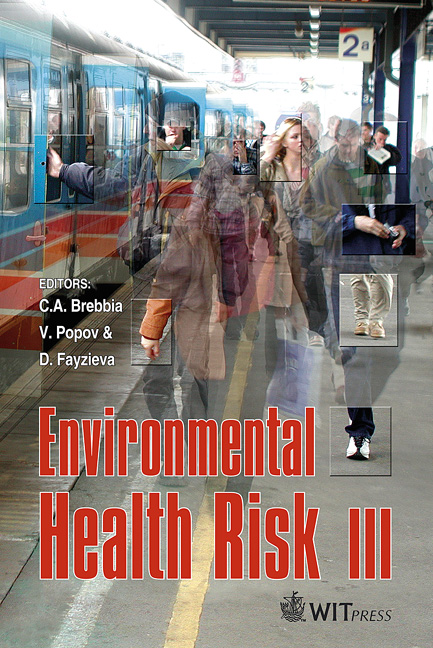Environmental Pollutants And Human Diseases: Diagnosis And Treatment
Price
Free (open access)
Transaction
Volume
9
Pages
9
Published
2005
Size
324 kb
Paper DOI
10.2495/EHR050441
Copyright
WIT Press
Author(s)
G. Passerini, R. Cocci Grifoni & M. M. Mariani
Abstract
Environmental factors play a central role in the processes of human development, health, and disease. Human exposure to hazardous agents in the air, water, soil, and food and to physical hazards in the environment is a major contributor to increased morbidity and mortality. Hazardous substances that originally are discharged as air pollutants may find their pathway to human exposure through multiple routes, including ingestion and dermal contact, as well as direct inhalation. The mechanisms for modeling and understanding the fate of air pollutants through atmospheric transport, deposition into water and soil, bioaccumulation, and ultimate uptake to receptor organs and systems in the human body are complex. A single contaminant source often may represent only a fraction of a total body pollutant burden. The EDTA chelation therapy enables the removal of toxic metals and excess calcium from the body. In this study we present results related to the detoxification treatment through continuous intravenous infusion of EDTA of 78 patients with cardiovascular problems and chronic fatigue syndrome. A comparison between toxic metals found in urine before and after the chelation-therapy treatment has been carried out. EDTA has been administered before urine collection, and a wide range of toxic metals (mercury, lead, arsenic, cadmium, nickel, and others) has been measured with reference to urine creatinine. 1 Introduction Health effects originated by air pollutants range from subtle biochemical and physiological changes to difficult breathing, wheezing, coughing and aggravation of existing respiratory and cardiac pathologies. Many health effects
Keywords





